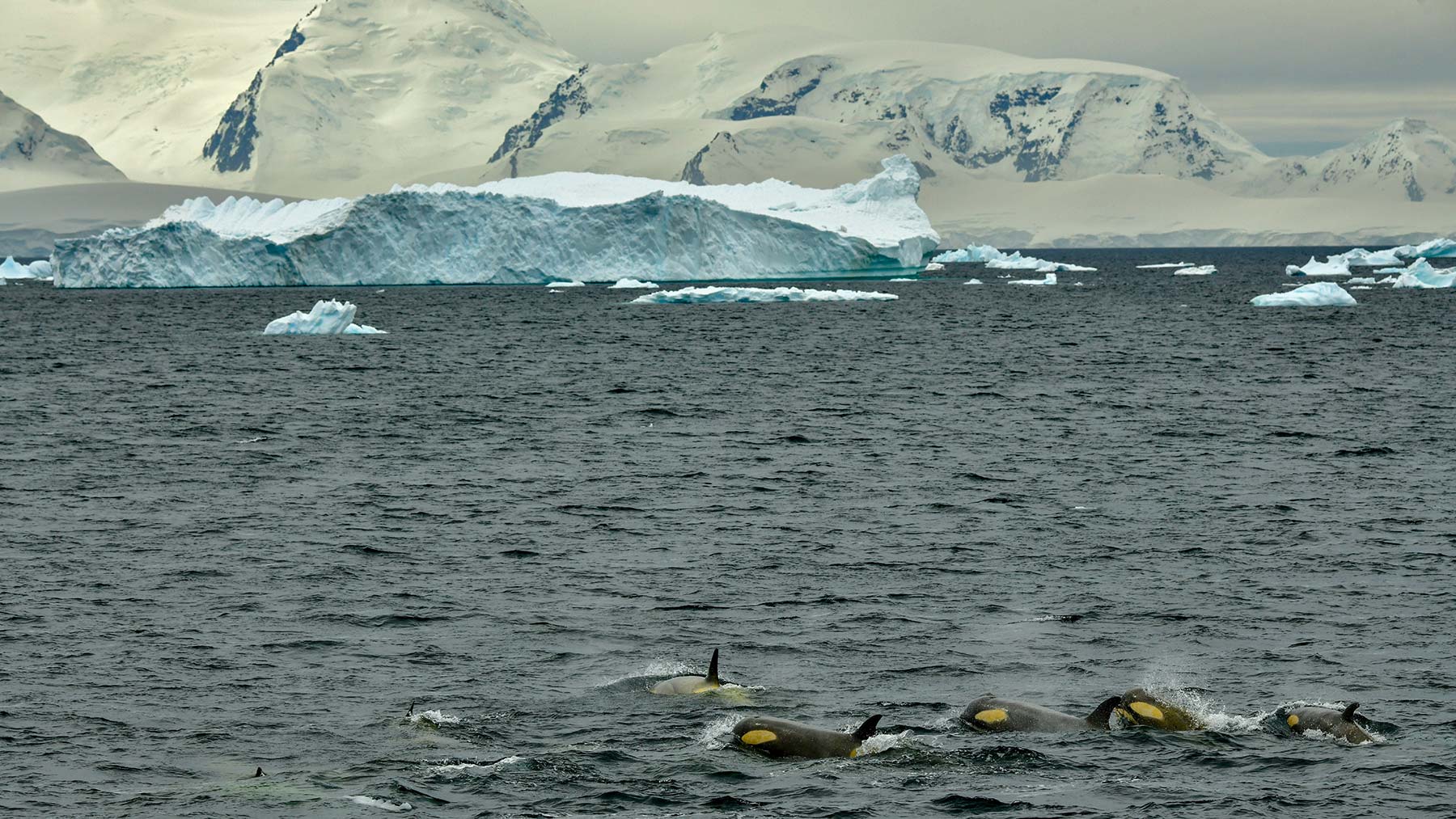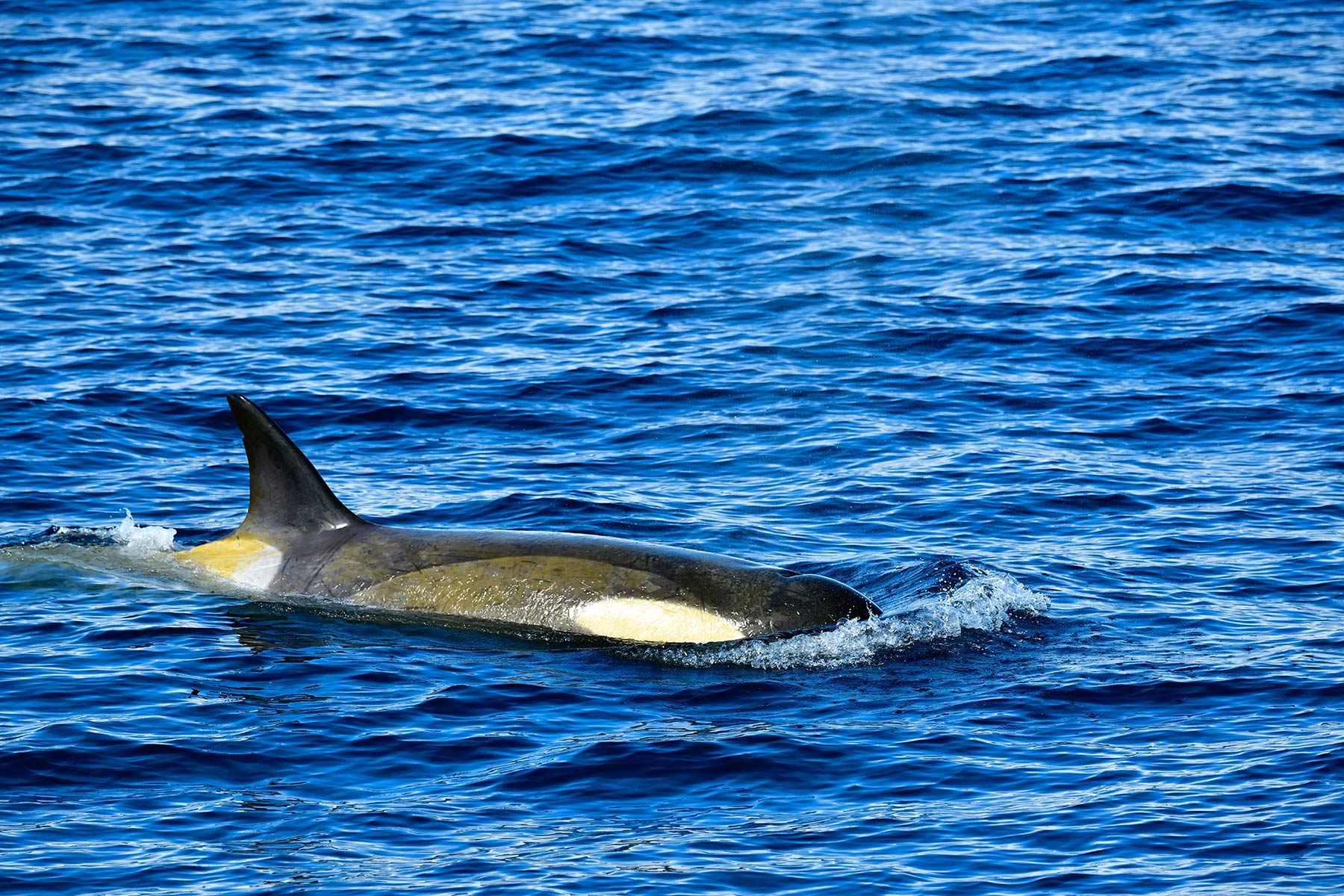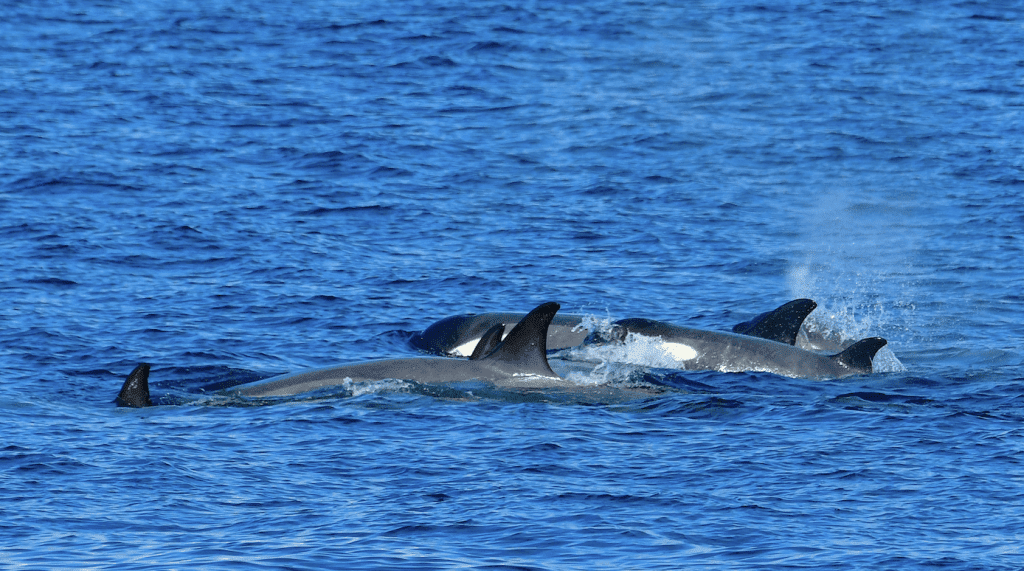Orca in Antarctica
Orca or ‘killer whales’ might be one of the most well-known and distinctive creatures that we encounter on our voyages to Antarctica. Identifiable by their distinguishing black and white markings, Orca are often spotted hunting and sometimes even putting on a show for our guests by breaching, spy-hopping or slapping their tails.
Referred to as ‘sea wolves’, these whales are ferocious and intelligent hunters. Working together in their pods, they effectively design hunting patterns to bring down their prey. Let’s learn more about these awesome mammals!

Pod of Orca in the Gerlache Strait
I, Spy
- Recognizable by their sleek black bodies with large white spots around their eyes and on their bellies
- Orca are noticeably more ‘stocky’ than other whales that are quite long and sleek by comparison
- Male Orca are significantly larger than the females
- Males also have a larger and more prominent dorsal fin than the females
- They have rows of sharp, conical-shaped teeth
- Orca are fast swimmers and have been known to reach speeds of 34mph

All in the Family
- Orca are known to stay within familial pods
- Pods of Orca are based around the female line
- Orca can live up to 90 years
- Different pods of Orca can be related, with pods connecting with another to form a ‘clan’
- Each pod has their unique language
- Resident pods can consist of any number of whales – up to as many as 50
- Mothers give birth to a single calf once every 5 years
- Rearing a calf is a responsibility taken on by the entire pod
Menu Please!
- Orca have a very diverse diet, depending on their pod
- Some Orca dine on Fish, Squid, Octopi and other smaller animals
- Other Orca prefer larger meals such as Sea Lions, Walrus, Penguins, Seals and other Whales
- Orca have teeth and hunt in packs like wolves
- Together as a team, they have been known to charge animals resting on sea ice, creating a large wave that knocks their prey into the water where other Orca are waiting
- Some animals are chased to the point of exhaustion, then attacked and beaten by the Orca’s tails and teeth
- Orca have been known to beach themselves on purpose to scare prey into the water or grab their next meal that is resting there

Well Whad’ya Know
- These whales are the most widely spread mammals after human beings and can be found in the cold waters of both the North and South pole
- Orca are a member of the dolphin family
- Transient pods and Resident pods do not interact with each other
- Orca are quite playful and have been known to put on a show
- They are apex hunters and have no known predators
- Though found in every ocean, Orca are most densely populated in the Southern Ocean
Want to see these intelligent and majestic creatures with your own eyes?
Reach out to our team to learn more about our voyages any time!
